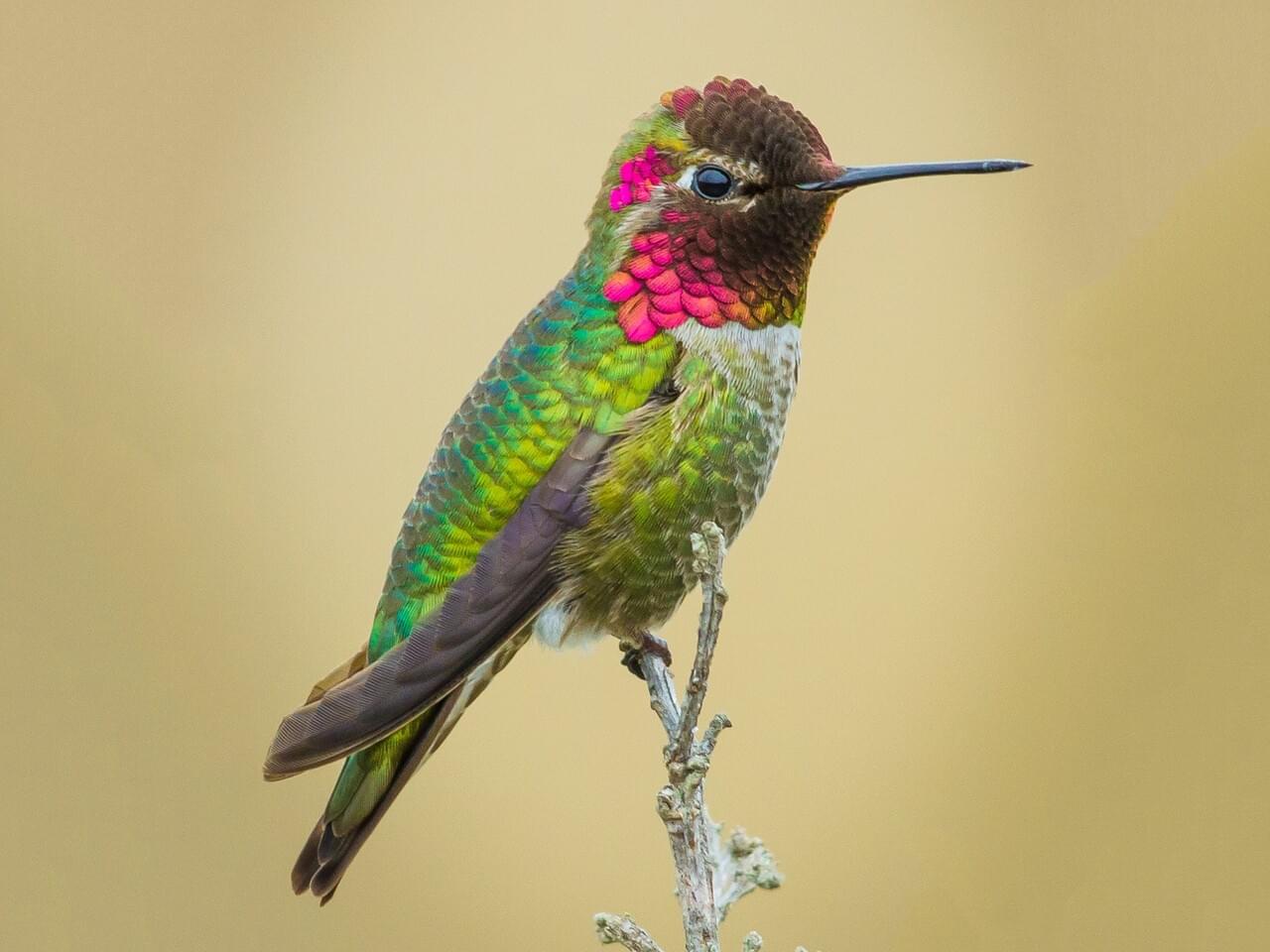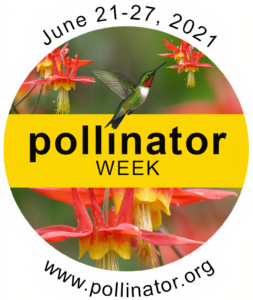
Let’s talk about the ones we love to watch in our California landscape – you know, the small bolting creatures that reenact an entire Rebel X-Wing vs. Empire TIE fighter Star Wars scene in the backyard over some sugar water.
The most common Hummingbird Species we see (and often duck from as they aggressively zoom over our heads) in California are below. It is common amongst hummingbirds that females are slightly larger than males.
Here are some fun facts and identification tools for these little birds:
Rufous Hummingbird or Selasphorus rufus
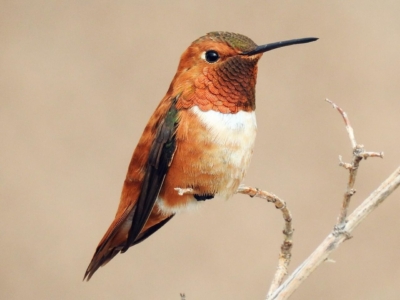
(Male Rufous) Photo Courtesy: 2017 Spencer Follett
- Known to be the most aggressive and territorial hummingbird of them all.
- Migratory; up to 2,000 miles of travel!
- On the smaller scale of the hummingbirds.
- Males are color orange/copper and sometimes green on back and belly and have a bright iridescent red or copper throat.
- Females have a white belly, orange colored sides, and green/gray crown and back.
Allen’s Hummingbird or Selasphorus sasin

(Male Allen’s) Photo Courtesy: ©JMBWildlife
- Males are covered in color; white chest, copper-orange back/belly/sides, and a green crown with a show-stopping iridescent orange and greenish throat.
- Females are typically the same color pattern as the males but only duller tones and have spottier faces/necks.
- Males attract females by flying into a big arc up to 100 feet high and then dive down in front of the female.
Calliope Hummingbird or Selasphorus calliope
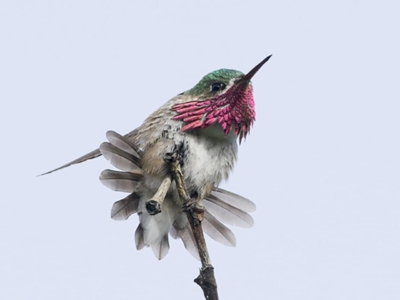
(Male Calliope) Photo Courtesy: ©Jeff Dyke
- Smallest native hummingbird (and bird in general) to North America; about 3 inches tall!
- Migratory
- Males perform a U-shaped dive in order to attract females.
- They prey on insects similarly to a hawk; watching their prey as they perch nearby, ready to dart.
- Males have a green head and back with a white belly with stripy colors of fuchsia or magenta on their throat.
- Females are metallic green besides their belly and throat. Their throat has grayish spots.
Broad-tailed Hummingbird or Selasphorus platycercus
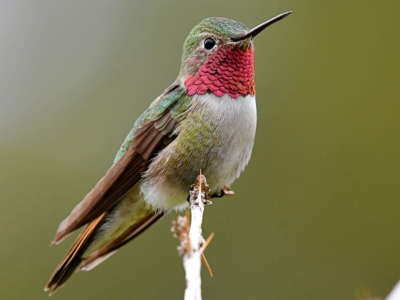
(Male Board-tailed) Photo Courtesy: ©Tristan Herwood
- Mid-sized
- Males have an emerald-green head and back with a white belly and an iridescent fuchsia throat.
- Females are majority light green-gray with a light brown belly and gray-speckled throat.
- Their wings can make a sound similar to crickets.
Anna’s Hummingbird or Calypte anna
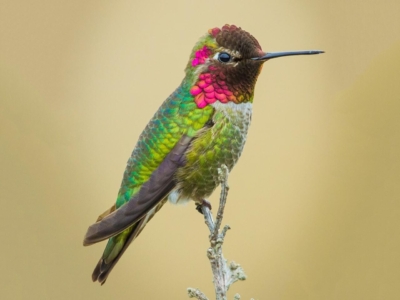
(Male Anna’s) Photo Courtesy: 2013 © Kyle Blaney
- Mid-sized
- Females are similarly colored to the broad-tailed female with white eyeliner on the top of their eye.
- Males have the show-stopping iridescent fuchsia head and throat while the rest of their body is a dark green-gray. They similarly have a white eye-liner.
- Sometimes in addition to nectar and insects, Anna’s will eat tree sap.
Costa’s Hummingbird or Calypte costae

(Male Costa’s) Photo Courtesy: 2017 © Gordon Karre
- Males are known for their bright purple head and throat that flares like an almost chevron-mustache shape.
- Males mindfully get the sun to catch the light of their purple coloring to attract females.
- Males also perform loops and dives for attracting females.
- Both males and females have shorter tails.
- Females have the typical white throat and belly and a greenish back.
Black Chinned Hummingbird or Archilochus alexandri
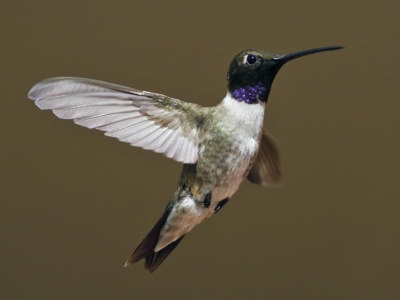
(Male Black-chinned) Photo Courtesy: 2017 Bill Maynard
- Migratory hummingbirds that will end up as far south as Mexico for the cold months.
- Mid-sized
- Males have a white belly, green-gray body, and a black-green head. Their chin is black and when their throat catches the light, it is an iridescent purple. There is a slight white spot behind their eyes.
- Females have a green-gray head to body and white belly. Their throat has gray spots.
How do we protect and support these little torpedoes, you ask? Plant for them. Some hummingbirds will forage nectar from up to 1,800 flowers in on day. Are you planting enough? Hummingbirds are attracted to especially bright and colorful flowers too with a shape that they ca fit their bill in.
If you have hummingbird feeders that you fill with sugar water and hang in your garden, make sure to maintain them properly by cleaning them often for bacteria and making sure there are no visible infestations! And keep in mind, hummingbirds don’t simply live off of sugar water/nectar – they need protein from insects too! Lastly, there are no concrete studies on the use of red food dye in sugar water being harmful to hummingbirds, but to play it safe, there is no need for dye anyway! The red coloring on the feeder is enough to attract them.
More Resources:
Activities:
- Hummingbird Coloring Page– color the hummingbird however you want! Which of the 7 above did you color for?
- Hummingbird Game: Download the printable version of this fun hummingbird migration game to play with the family and be the first hummingbird to make it to Mexico!


